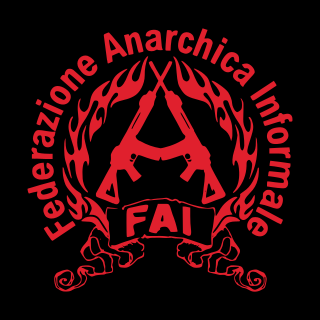
The Wall Street bombing was an act of terrorism on Wall Street at 12:01 pm on Thursday, September 16, 1920. The blast killed 30 people immediately, and another 10 later died of wounds that they sustained in the blast. There were 143 seriously injured, and the total number of injured was in the hundreds.

In December 1973, Fatah, a Palestinian military organization executed series of attacks originating at Rome-Fiumicino Airport in Italy which resulted in the deaths of 34 people. The attacks began with an airport-terminal invasion and hostage-taking, followed by the firebombing of a Pan Am aircraft and the hijacking of a Lufthansa flight.

The Piazza Fontana bombing was a terrorist attack that occurred on 12 December 1969 when a bomb exploded at the headquarters of Banca Nazionale dell'Agricoltura in Piazza Fontana in Milan, Italy, killing 17 people and wounding 88. The same afternoon, another bomb exploded in a bank in Rome, and another was found unexploded in the Tomb of the Unknown Soldier. The attack was carried out by the neo-fascist paramilitary terrorist group Ordine Nuovo, and possibly undetermined collaborators.

Terrorism in India, according to the Home Ministry, poses a significant threat to the people of India. Compared to other countries, India faces a wide range of terror groups. Terrorism found in India includes Islamist terrorism, ultranationalist terrorism, and left-wing terrorism. India is one of the countries most impacted by terrorism.

Adriano Sofri is an Italian former far-left politician, a journalist and a writer. He was convicted for ordering the assassination of Milan Police officer Luigi Calabresi in 1972. This was one of the most important murders during the historical period of social turmoil and political violence in Italy known as the "Years of Lead". Spanning from the late 1960s until the late 1980s, they were marked by a wave of both far-left and far-right incidents of political terrorism.

Giuseppe "Pino" Pinelli was an Italian railroad worker and anarchist, who died while being detained by the Polizia di Stato in 1969. Pinelli was a member of the Milan-based anarchist association named Ponte della Ghisolfa. He was also the secretary of the Italian branch of the Anarchist Black Cross. His death, believed by many to have been caused by members of the police, inspired Nobel Prize laureate Dario Fo to write his famous play titled Accidental Death of an Anarchist.

Renato Curcio is the former leader of the Italian far-left terrorist organization, the Red Brigades.

Left-wing terrorism or far-left terrorism is terrorism motivated by left-wing or far-left ideologies, committed with the aim of overthrowing current capitalist systems and replacing them with communist or socialist societies. Left-wing terrorism can also occur within already socialist states as criminal action against the current ruling government.
The history of terrorism involves significant individuals, entities, and incidents associated with terrorism. Scholars often agree that terrorism is a disputed term, and very few of those who are labeled terrorists describe themselves as such, it is common for opponents in a violent conflict to describe the opposing side as terrorists or as practicing terrorism.
Multiple terrorist attacks have occurred in Greece.

The Years of Lead were a period of political violence and social upheaval in Italy that lasted from the late 1960s until the late 1980s, marked by a wave of both far-left and far-right incidents of political terrorism and violent clashes.

Luigi Calabresi was an Italian Polizia di Stato officer in Milan. Responsible for investigating far-left political movements, Calabresi was assassinated in 1972 by members of Lotta Continua, who blamed him for the death of anarchist activist Giuseppe Pinelli in police custody in 1969. The deaths of Pinelli and Calabresi were significant events during the Years of Lead, a period of major political violence and unrest in Italy from the 1960s to the 1980s.

Prima Linea was an Italian Marxist–Leninist terrorist group, active in the country from the late 1970s until the early 1980s.

The Informal Anarchist Federation is an insurrectionary anarchist organization. It has been described by Italian intelligence sources as a horizontal structure of various anarchist groups, united in their beliefs in revolutionary armed action. Groups and individuals comprising the FAI act both as separate organizations and also under the FAI, and are known to work together. The FAI notably has similar aims and ideals to the Greek Conspiracy of Fire Nuclei, the two often working in solidarity with each other, and the SPF being known to announce solidarity with FAI in their communiques. The group started in Italy, and since 2012 has committed attacks in other countries across the world.

There is a long history of terrorism in Europe. This has often been linked to nationalist and separatist movements, while other acts have been related to politics, religious extremism, or organized crime. Terrorism in the European sections of the intercontinental countries of Turkey and Russia are not included in this list.
Terrorism in Argentina has occurred since at least the 1970s, especially during the Argentine Dirty War, where a number of terror acts occurred, with support of both the democratic government of Juan Perón, Isabel Perón and the following de facto government of the National Reorganization Process. In the 1990s, two major terrorist attacks occurred in Buenos Aires, which together caused 115 deaths and left at least 555 injured.

Terrorism in Italy is related to political and subversive terrorism activities, carried out by various groups and organizations with different and sometimes conflicting methods, motivations and interests. This article is primarily about late 20th-century and early 21st-century terrorism.
Terrorism in Turkey is defined in Turkey's criminal law as crimes against the constitutional order and internal and external security of the state by the use of violence as incitement or systematic to create a general climate of fear and intimidation of the population and thereby effect political, religious, or ideological goals. Since the establishment of the Republic of Turkey, both organized groups, lone wolf, and international spy agencies have committed many acts of domestic terrorism against Turkish people.














